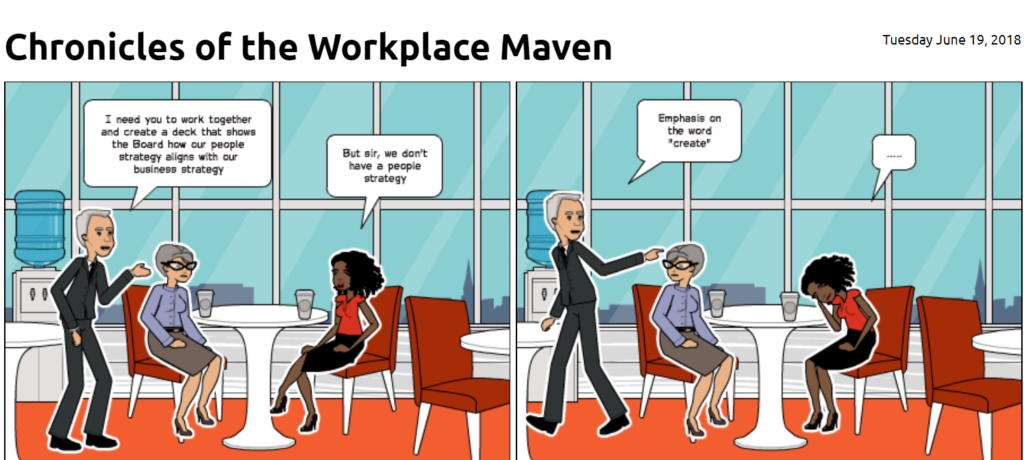A focused people strategy that is integrated with and drives business objectives forward determines organizational successful. Companies spend countless hours and resources creating game-changing business strategies, but at the end of the day, irrespective of the particulars, people will be the ones who ultimately drive or implement these strategies and are at the core of all business success. Below are 6 essential people strategies that are integral to attaining positive business outcomes. Although this post will only briefly introduce the 6 concepts, over the next few weeks each subsequent post will do a deeper dive into each tactic individually; discuss how these strategies impact the bottom line and lay out how to effectively develop a plan for your organization. Discover the path to aligning people success with business results.
1. Talent Acquisition Strategy
Talent acquisition by definition is the process of attracting and hiring employees so that an organization can conduct its business. A talent acquisition strategy however, is more complex, it is the development of a company specific approach that when done correctly results in attracting and hiring the right talent specific to the organization’s needs. Nothing will affect the bottom line more than identifying and hiring the best talent for your organization.
2. Leadership Development Strategy
Leadership development refers to company programs or actions focused on improving the skills, abilities and confidence of those holding leadership positions in an organization as well as the preparation of high-potential employees to become future leaders. Since leadership has such a large impact on the entirety of an organization, preparing talent to hold this responsibility is essential. Investing in developing current and future leadership is a necessary investment in the future success and growth of any organization.
3. Engagement Strategy
Engaged employees are those employees that work with passion, willingly go the extra mile, and feel a connection to their organization. An effective engagement strategy will tap into what employees’ need in order to establish that emotional commitment or connection to the organization such that they are motivated to put forth additional effort to ensure the organization succeeds. The importance of a purposeful employee engagement strategy can’t be overstated – effective engagement strategies have been proven to reduce turnover, improve productivity and efficiency, retain customers at a higher rate, and make more profits. Succeeding at employee engagement is the key to moving a business forward.
4. Performance Management Strategy
Performance management was traditionally know as simply conducting a formal performance evaluation once a year – but a performance management strategy goes beyond that. An effective performance management strategy is an active, progressive process of evaluating how the people of an organization are performing their responsibilities on an ongoing basis and counseling or coaching those that are failing to make the necessary contributions to the organization to ensure that what remains is the talent that is willing and able to meet the mission and goals of the business. Providing employees with opportunities of continuous feedback, support and improvement will foster more productive employees – and productive employees are the lifeblood of every organization.
5. Diversity Strategy
An effective diversity strategy will implement a planned approach to create a diverse and inclusive workplace. This goes beyond simply looking to inherent traits like race and gender – but instead reinforces a broader definition inclusive of different backgrounds, schools of thought, experiences, age and geography. In today’s political, economic, and global business environment, diversity has become increasingly important. As a comprehensive strategy, diversity and inclusion is woven into all aspects of the employee life cycle. In the end, diverse teams have been proven to deliver tangible business results, reduce risk exposure, and drive innovation providing organizations with a sure competitive advantage.
6. Organizational Design Strategy
Organizational design and development is the process of analyzing existing employee work flow and workplace procedures, structures, systems and technology and aligning them to fit the current business model and goals. Many productivity and performance issues can be attributed to poor organizational design. An effective organizational design strategy will result in business processes and human capital resources efficiently and effectively contributing to meet business goals while setting up the organization’s people to successfully perform to meet those goals.
A well thought out people strategy that aligns an organization’s talent with its business strategy will inevitably lead to positive business outcomes. In my new role as Chief Executive Officer of HR & Beyond, I have the privilege of assisting businesses develop and implement these essential people strategies enabling them to realize their strategic business goals and objectives. Remember, businesses themselves don’t create value – people do. Join me next week as we begin to delve individually into each of these strategies.


In my opinion, I think it would be best to hire a consultant regarding organizational strategies, especially if a company is a startup that’s still trying to find their way into growing as a business. As you’ve mentioned, a well-thought-out strategy must align with the company’s business strategy in order to obtain results, and I’m sure that most companies who are still starting out don’t know how to do that yet. I’ve seen a lot of companies fail because they don’t try to prioritize this at all, and it seems like those who do tend to have higher chances of succeeding based on what I read on the paper, so it makes me curious if they use experts in the field to help them out.